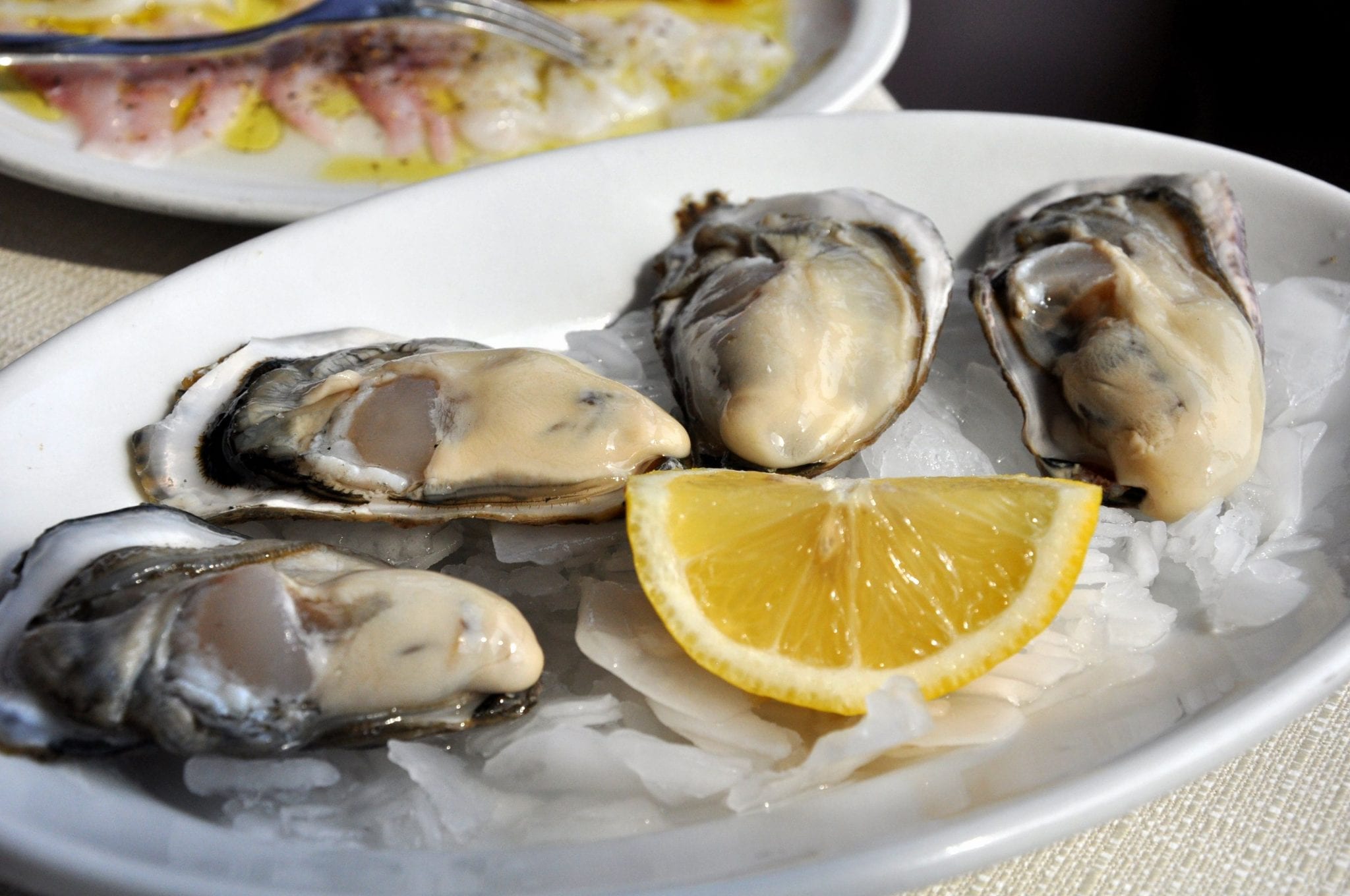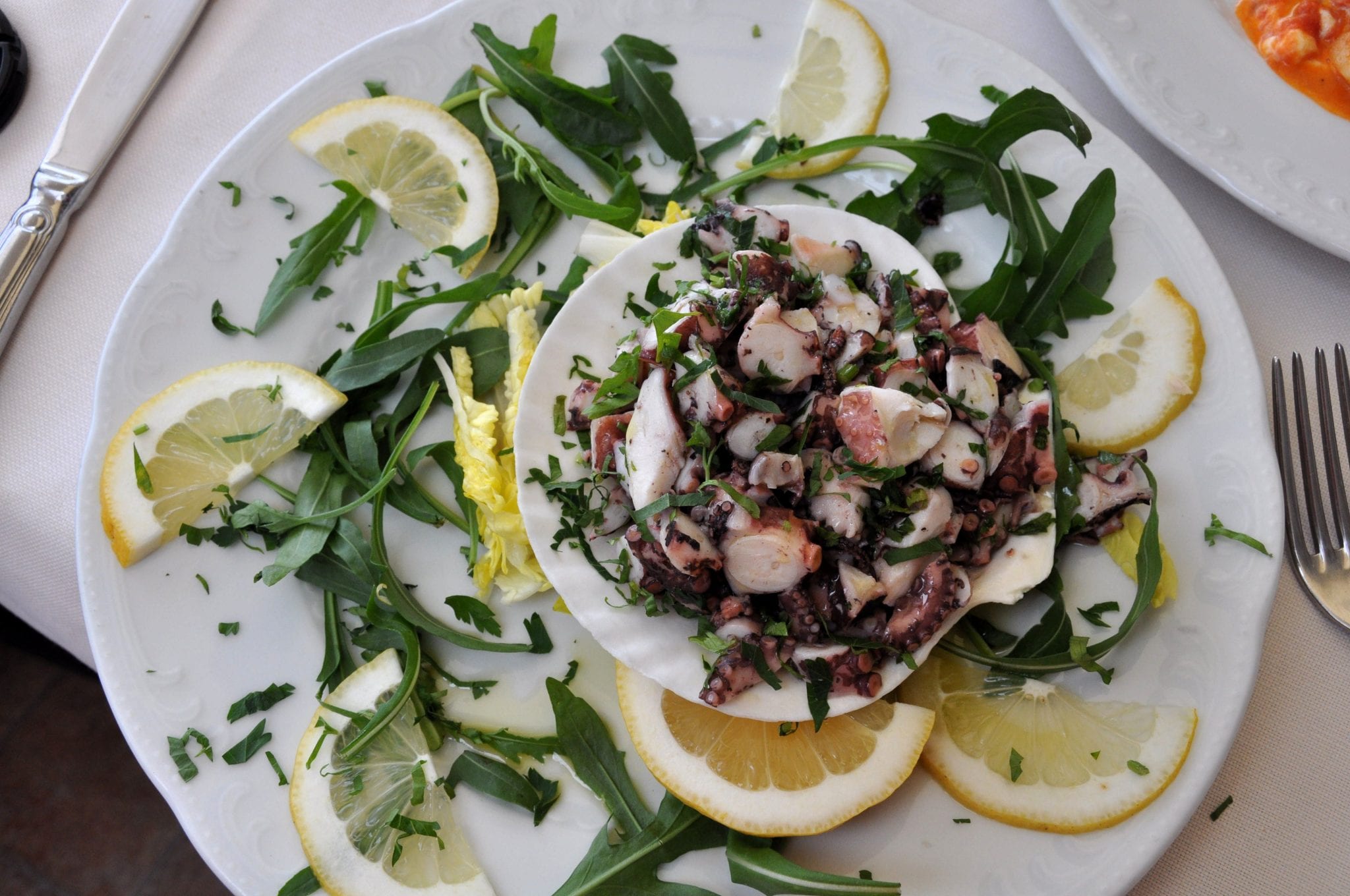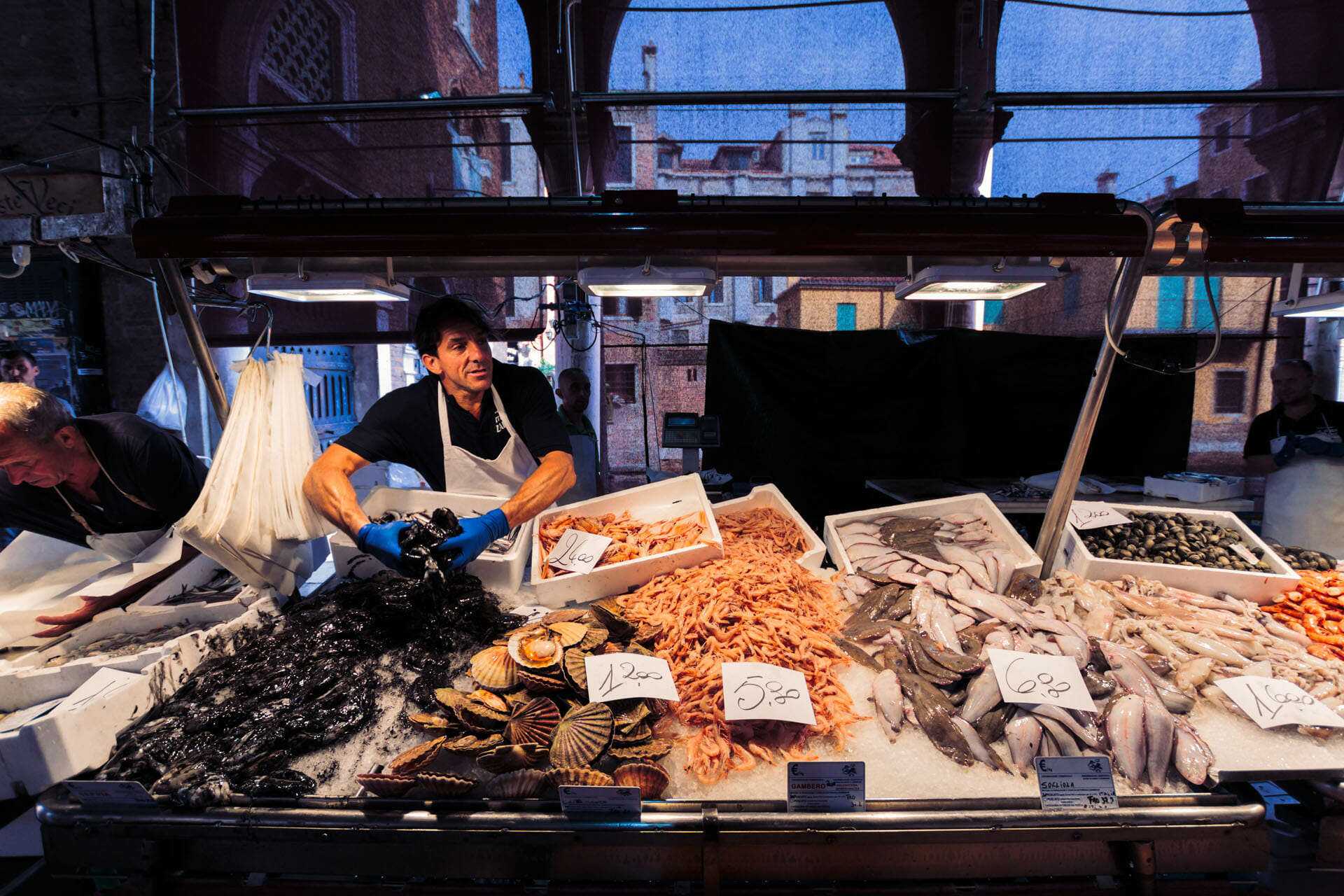
Eating Fish & Seafood in Italy: What You Need to Know
November 14, 2024
If you’re planning on coming to Italy’s seaside areas, you’re probably going to be eating some fish. And you should. There’s nothing like enjoying a plate of fresh seafood… overlooking the sparkling Mediterranean water.

Which fish should you avoid in Italy? And which should you choose?
Table of Contents
ToggleIntro to Fish and Seafood in Italy
The only thing that could be better? Enjoying a plate of fresh seafood, overlooking the water—and knowing that your enjoyment of that fish isn’t hurting the sea you’re looking at. Or that your delicious meal is contributing to the fact that the fish itself won’t be around in a few years.
If you’ve never thought about the problems with eating fish before (after all, the ocean is so big!), now’s the time. The world’s consumption of fish has doubled over the past 30 years. Fishing has become industrialized, with boats using sonar, satellites, even aircraft to zero in on fish, then casting nets miles long. The result: 80 percent of the world’s main fish species are already at risk of disappearing.
Another problem, one particularly prevalent in Italy, is “pirate fishing.” This is illegal fishing, where unlicensed boats work outside the law, evading environmental protocols to get the most fish, fast—including intimidating small-scale fishermen, overfishing, and using banned fishing methods (like bottom trawling, a method where nets are dragged along the ocean floor, catching some fish but crushing and killing others along with the coral marine animals need to survive).
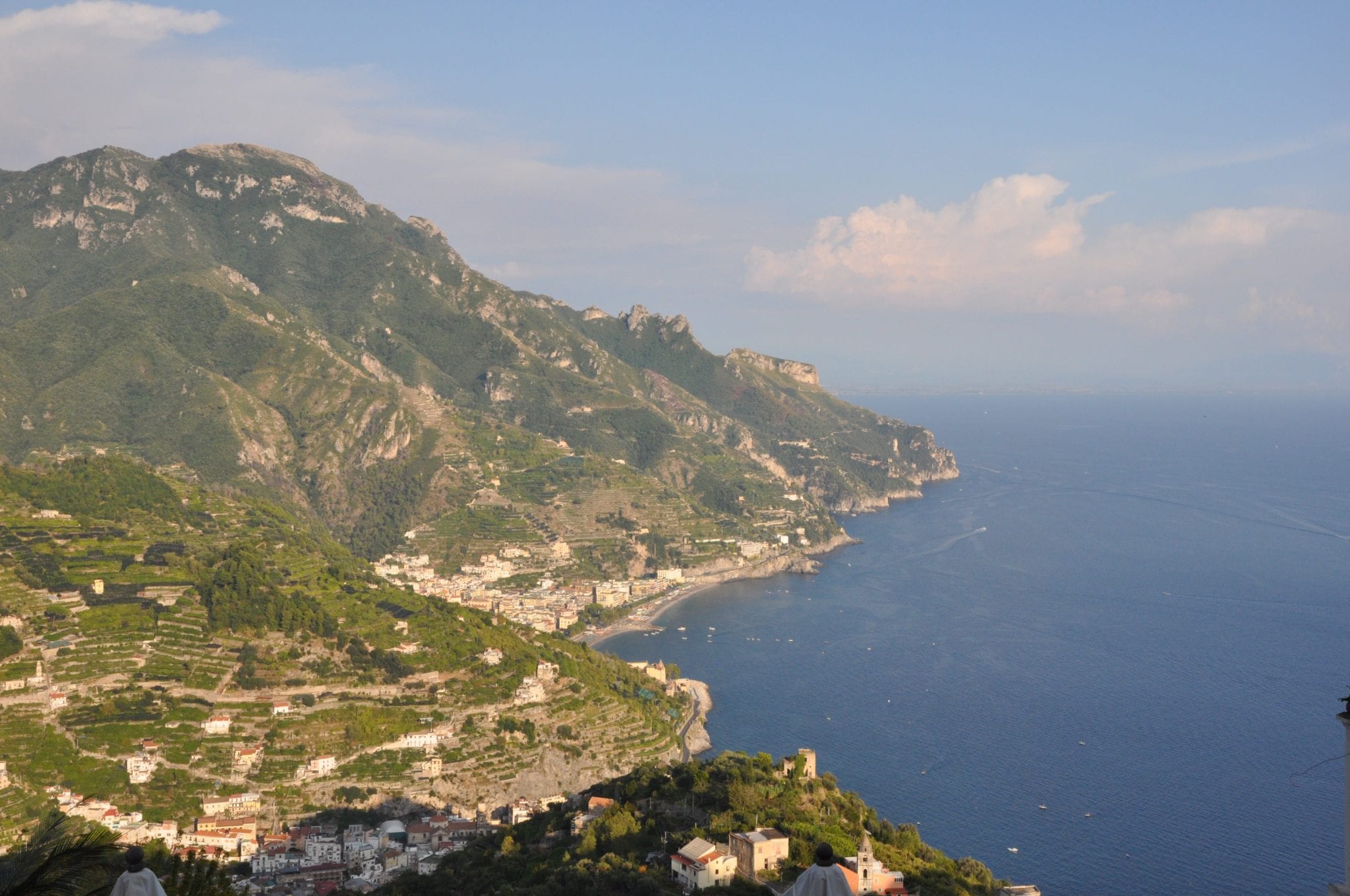
Unfortunately, fishermen off the Amalfi coast (and elsewhere in Italy) don’t always follow fishing laws
Tourists, along with locals, often unwittingly buy fish from these methods. Since 1988, for example, it’s been a felony to fish so-called “date mussels,” or datteri di mare—not only do these mussels take about 80 years to mature, but fishing them destroys the coastline. Yet they’re still fished, and sold. The area where they’re fished, and served in restaurants, most often? The Sorrentine peninsula… i.e. the Amalfi coast. In fact, the illegal fishing brings 2 million euros a year just to the Sorrentine peninsula.
The issue with all of this isn’t just that fish are disappearing. It’s also that it’s upsetting the entire equilibrium of the ocean. Take jellyfish, the example noted by the excellent “Slow Fish” site (an offshoot of “Slow Food” movement). Noticed how they’ve become a serious annoyance to swimmers and bathers on beaches across the world? It’s getting worse, and the reason is because jellyfish predators—bluefin tuna, sea turtles, and others—are disappearing, as are the jellyfish’s competitors for food, like small fish. Result: Jellyfish populations are booming.
Obviously, these are big problems.
But one way to help… is simply to pay attention to what fish you eat in Italy (and everywhere else!).
Do they eat salmon in Italy?
There are some fish you simply shouldn’t eat. Because so much research has to be done on just which fish are disappearing the fastest, there’s no one firm list with every variety you should, for now, stay away from.
We’ve put together this handy list to help you dine on the finest, freshest, and most sustainable of the Mediterranean’s fish—along with the Italian translations! Print it off, put it in your wallet, and take it with you to Italy. The fish will thank you!
In the Mediterrean, fish to avoid generally include salmon (salmone), red tuna (tonna rosso—a particular favorite of Italy’s illegal fishermen), eel (anguilla), scallops (capasanta), grouper (cernia), hake (nasello), skate (razza), tropical farmed shrimp (gamberi tropicali allevati), swordfish (pesce spada), date mussels (datteri di mare), and whitebait (bianchetti).
But there are fish you can still enjoy. Mediterrean seafood given the “green light” include anchovies (acciughe and alice), gray mullet (cefalo), mussels (cozze), shrimp (gamberetto), leer fish (leccia), cod (merluzzetto), oysters (ostriche), bonito (sarda or palamita), sea cicadas (pannocchia or canocchia), pollack (pollack), turbot (rombo chiodato), mackerel (sgombro), horse mackerel (sugarello), and squid (calamaro or totano).
It also helps to order fish that are adult, local, and in season. What does “in season” mean? Fish reproduce at certain times of year, so if you eat them according to their season, it’ll give them the chance to reproduce.
Spring: Horse mackerel (sugarello), mackerel (scombro), tub gurnard (mazzole, capone gallinella, or gallinella), sea bass (spigola or branzino), white sea bream (sarago), leerfish (cerviola, cagnola, leccia or ricciola), bonito (sarda or palamita), sea bream (occhialone or pagello)
Summer: Horse mackerel (sugarello), sole (sogliola), gilthead sea bream (orata), greater amberjack/yellow tail (acciola, aricciola or alice grande), sea bass (spigola or branzino), tub gurnard (mazzole, capone gallinella, or gallinella), white sea bream (sarago), sardines (sardine), anchovies (acciughe)
Fall: Albacore/longfin tuna (albacora), sea bass (spigola or branzino), mullet (triglia or muggine), turbot (rombo chiodato), tub gurnard (mazzole, capone gallinella, or gallinella), dolphin-fish (lampuga)
Winter: Mullet (triglia or muggine), white sea bream (sarago), sardines (sardine), greater amberjack/yellow tail (acciola, aricciola or alice grande), anchovies (acciughe), monkfish (rana pescatrice), bonito (sarda), mackerel (scombro), carpet-shell clams (vongole veraci), turbot (rombo chiodato), octopus (polpo), cuttlefish (seppia), dolphin-fish (lampuga)
All year: Gray mullet (cefalo), striped sea bream (mormora), and saddled bream (occhiatta)
Want to know more about the threats facing the world’s fish, and how you can help? Websites like Good Fish Bad Fish give great overviews on the issue, and what you can do to help.
You might also like…
Preserving “The Genius of a Place” in Tuscany’s Cortona
Cinque Terre After the Floods: Is it Open to Visitors?
When Is the Best Time to Come to Italy… For My Tastebuds?
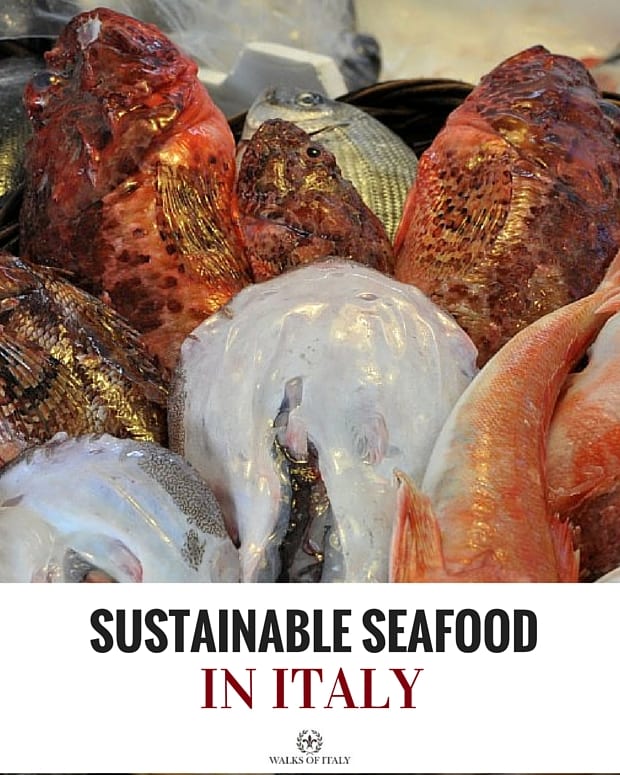
by Walks of Italy
View more by Walks ›Book a Tour

Pristine Sistine - The Chapel at its Best
€89
1794 reviews

Premium Colosseum Tour with Roman Forum Palatine Hill
€56
850 reviews

Pasta-Making Class: Cook, Dine Drink Wine with a Local Chef
€64
121 reviews

Crypts, Bones Catacombs: Underground Tour of Rome
€69
401 reviews

VIP Doge's Palace Secret Passages Tour
€79
18 reviews

Legendary Venice: St. Mark's Basilica, Terrace Doge's Palace
€69
286 reviews









